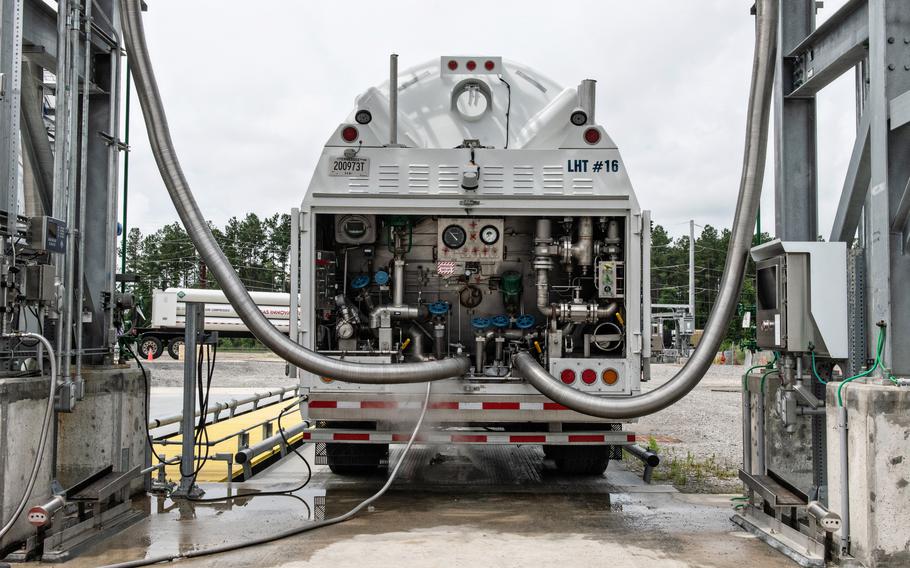
Hydrogen is loaded into a truck at a liquid green hydrogen plant in Woodbine, Georgia. (Agnes Lopez/Bloomberg)
The Biden administration loosened some stringent safeguards on a tax credit worth billions of dollars for hydrogen production, after companies argued the rules would stifle domestic manufacturing of the fuel.
The tax credit created by President Joe Biden’s signature climate law now includes a carve-out, sought by companies including Constellation Energy Corp., that will benefit some existing nuclear power plants, according to final rules released by the Treasury Department Friday.
The rules, which were released in draft form in December 2023, also provide pathways for hydrogen made from natural gas with carbon capture systems, methane and renewable natural gas to receive the tax credit.
The credit, which provides as much as $3-per-kilogram for production, is meant to spur a domestic industry for the clean-burning fuel, which advocates say is critical for lowering carbon dioxide emissions in the production of steel, cement and heavy transportation. The rules surrounding subsidies for it have been the subject of intense lobbying over what projects can qualify, with producers such as Plug Power Inc. pressing for changes.
“The extensive revisions we’ve made in this final rule provide the certainty that hydrogen producers need to keep their projects moving forward and make the United States a global leader in truly green hydrogen,” John Podesta, senior climate adviser to Biden, said in a statement.
Constellation shares rose 2.6% before the start of regular trading in New York. Plug Power shares rose 2.5%.
As proposed, the most lucrative credits will go to projects powered by wind, solar, or other renewable generating plants that were added to the grid within three years of the hydrogen plant starting operations. But in a change to the rule, producers have an additional two years to fulfill the requirement that the clean energy be generated at the same time as the gas.
The new rules allow some nuclear reactors to count as a clean energy source. They also include electricity from states that have “robust” greenhouse emission caps paired with clean electricity standards, including California and Washington.
In addition, methane made from natural gas using carbon capture and sequestration is included. Policymakers also expanded the eligibility of kinds of renewable natural gas that can be used, including methane from wastewater, animal manure and coal mines.
The final rule “affords project developers the basis for evaluating opportunities to scale clean hydrogen deployments,” Frank Wolak, president of the Fuel Cell and Hydrogen Energy Association, said in a statement.